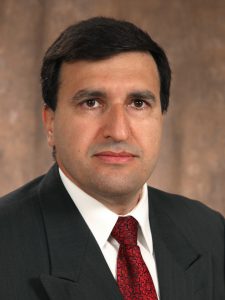
The concept of patient-centered care has as many definitions as there are practicing physicians. Endocrine News reached out to a handful of Endocrine Society members to get their opinions on this concept and how it can be used to the benefit of an endocrinology practice, as well as the patients.
In 2001, The Institute of Medicine published a book called Crossing the Quality Chasm: A New Health System for the 21st Century. In it, they identified six aims for improvement, one of which was “patient-centered care,” defined as “providing care that is respectful of and responsive to individual patient preferences, needs, and values, and ensuring that patient values guide all clinical decisions.”
Ten years later, Ronald M. Epstein, MD, and Richard L. Street, PhD, published an article in Annals of Family Medicine called “The Values and Value of Patient-Centered Care,” writing that the concept is now “center stage in discussions of quality,” but confusion and concerns remain about what “patient-centered care” really means. They point to hospitals adopting models used by boutique hotels (“greeters, greenery, and gadgetry”) in the name of “patient-centeredness” as superficial, they note that giving a patient unnecessary antibiotics is not patient-centered care, and they write that patients’ and physicians’ perceptions of what actually happened during the examination can differ; the patient may think he or she participated, but an observation of the encounter would say otherwise.
Epstein and Street conclude that while “patient-centered care” is front and center of conversations in terms of high-quality medical care, “our measures are not yet up to the challenge of ensuring that it is happening.”
However, they also write in their conclusion: “Fortunately, several groups with sufficient expertise and infrastructure are developing new measures, building on the laudable efforts of their predecessors.” In that case, Endocrine News asked several of our members about what “patient-centered care” means to them. Here are their answers.
Alan Dalkin, MD, professor of medicine at the University of Virginia, Charlottesville

In my opinion, patient-centered care relates to the notion that the medical providers and processes are shaped/built to provide the highest quality care to fit the patient’s needs/goals. For instance, one approach to getting an MRI of a patient’s pituitary gland may be simply fitting them into the next available slot (which may be a separate trip) or conversely trying to have that study done so it fits into an efficient schedule for having the patient seen by physicians, surgeons, and other support staff. Reality is often somewhere in between since there is not unlimited flexible capacity in doctors and radiologists and labs and such. This extends to after-visit care as well. Patient-centered care includes getting patients and referring providers’ information and a care plan in a timely and helpful manner. It means coordinating care for patients that live at a distance. It means making sure that medical records are available to the patient and providers as their health care evolves in other areas.
As an example for the communication piece, I have tried for all patients to provide them with their results shortly after the visit, and to do so via an electronic written communication (email or via or electronic medical record) that shows both results and interpretation. In this way, they can ask further questions or use these notes for reference at a later time. I try to answer all calls/questions within 24 hours.
Finally, I think that much of medicine is not black and white, and with the goal of empowerment of patients, I try to have a discussion with each regarding the steps taken in their medical care. Some tests are better than others, but there are choices. Some medications are better than others, but there is often multiple reasonable options. By directly involving the patients in their prospective planning, that puts the patient at the center of their medical care.
Pendar Farahani, MD, MSc, FRCPC, DABIM, FACP, FACE, assistant professor in the Department of Health Research Methods, Evidence, and Impact at McMaster University in Toronto, Ontario, Canada

Therefore, after I explore the patient’s views and understating, as the navigator, I will provide information on treatment options and management plans. And finally, the patient who is the driver will choose the road for the journey of his or her care. The most crucial aspect in the process of “navigation” is amalgamation of the patient’s perspectives with available medical evidence alongside important factors such as the patient’s comorbidities, age, sex/gender, ethnicity, socioeconomic status, education, geography, and healthcare accessibilities.
Carol Greenlee, MD, FACE, FACP, of Western Slope Endocrinology in Grand Junction, Colorado

Another aspect is moving from the physician being at the center of the care model, with staff working to help the physician (doing tasks for the physician or other clinician such as “rooming” the patient or “scheduling” the patient for the clinician) to the staff also “taking care of the patient” as their job, with different roles on the patient-centered care team (getting the patient in for a needed appointment). It is doing what is best for the patient (not giving the patient what they want, e.g. pain meds, MRI, antibiotics) or ask for (those things are not often best for the patient, but takes time to discuss through).
It’s taking our best science and knowledge and technology and then adapting it to meet the patient’s unique needs, circumstances, values, and goals. It requires clearing up misconceptions (such as asking what the patient currently understands about a condition or a test or treatment), helping discuss risks and benefits in the context of that individual patient. It requires asking not just telling, but it is not dumping everything back on to the patient. It is taking into account the “work” (the job) of care (self-care that the patient or family need to do) on top of the illness and the rest of life that the patient and their family have to deal with and do (i.e. consideration)
Most clinicians think that they are already patient-centered because they care about their patients. But that does not mean they provide patient-centered care or practice in a patient-centered approach. I thought I was patient-centered because I cared….but then I had to uproot my mental model to really become patient-centered.
Karl Nadolsky, DO, Diabetes Obesity & Metabolic Institute Walter Reed National Military Medical Center; Uniformed Services University, Bethesda, Md.

Part of the reason I went into endocrinology and continue to focus on obesity is because I think we have the opportunity to play an integral role in optimizing a holistic approach to patient-centered care. In my practice, it is a goal to establish a multidisciplinary team providing personal or individualized education, support, coordination, and treatment through lifestyle/behavioral therapy and medical or surgical therapy. This likely succeeds when the patient is the center and in control, utilizing the medical team instead of being dictated per se.
— Derek Bagley is the senior editor of Endocrine News. He wrote about diabetes and the aging patient in the December 2016 issue.

